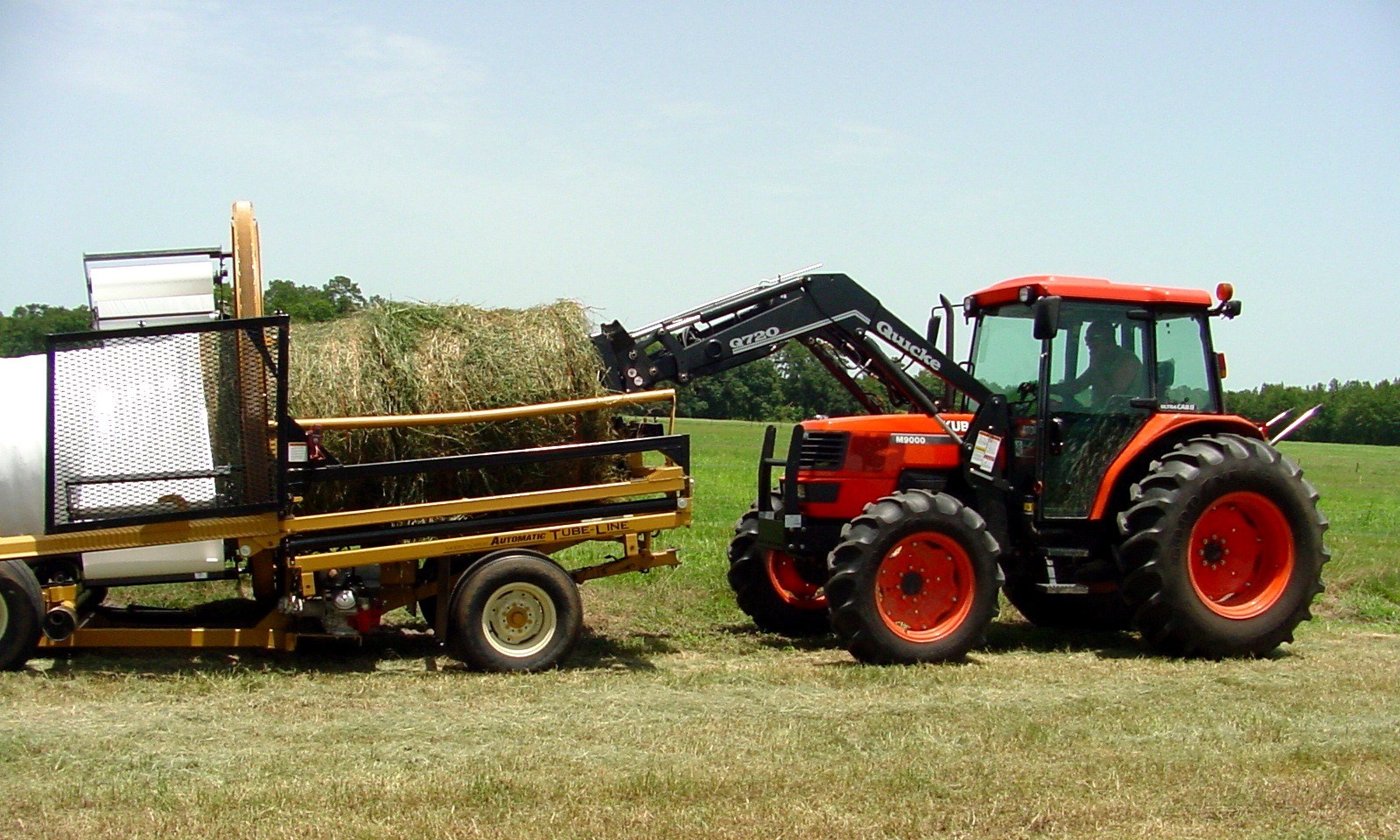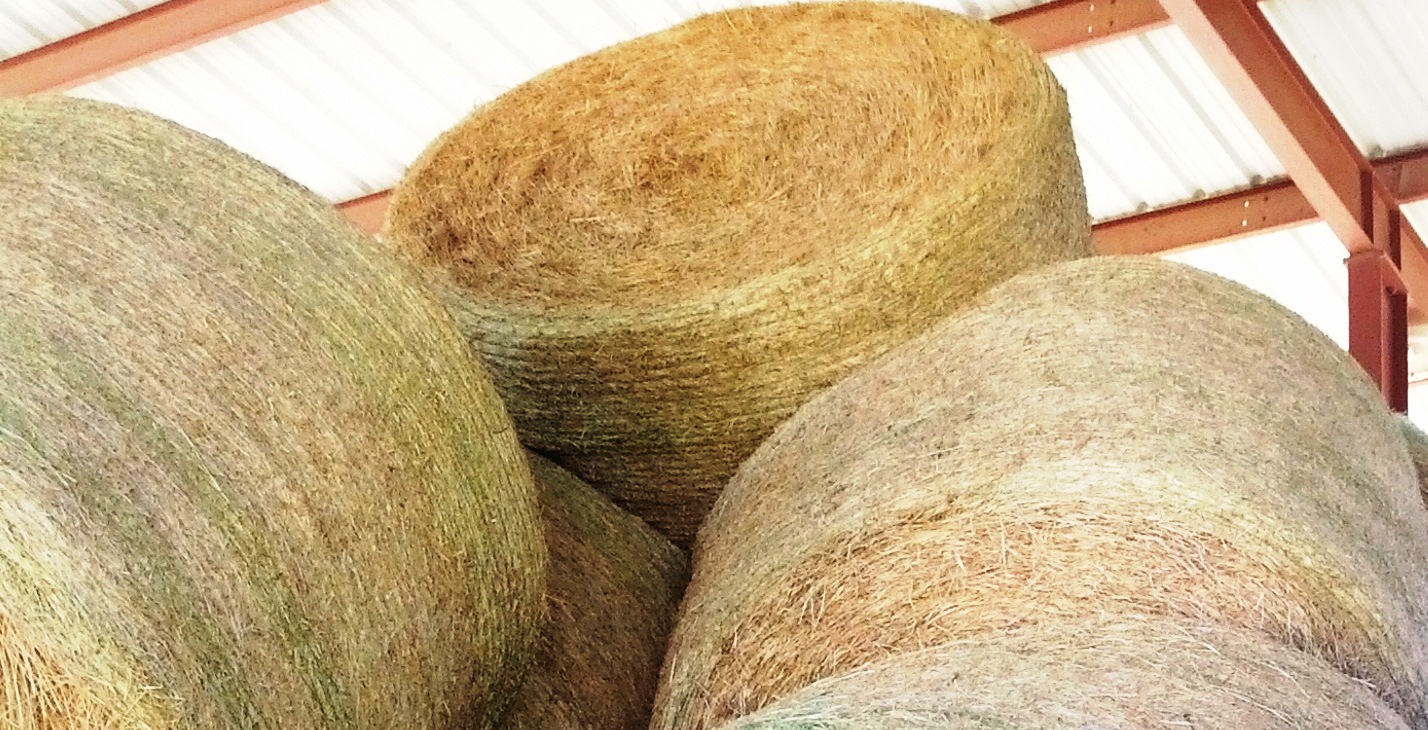
Creating an airtight seal using plastic is critical for making quality round bale silage. Photo Credit D. Mayo
Introduction:
“When the sun shines, make hay.” (John Heywood, 1546).
For north Florida’s farmers, that statement is much easier said than done lately. Daily precipitation and rainfall amounts well over 10 inches have left hay farmers frustrated. While, of course, the rain is a welcome relief, near daily precipitation this early summer has prevented many hay farmers from cutting hay at optimal times and has reduced the odds of having a successful second and third cutting later this year.
It is during these times, that some producers look to the feasibility of baling “wet” hay or baleage. With proper conditions, hay can be baled, and used as quality feed in the form of round bale silage (RBS). “Haylage, baleage, and round-bale silage are all different names for the same method of preserving forage with intermediate moisture in plastic wrapped bales.” (Joao Vendramini Haylage of Warm-Season Perennial Grasses in Florida). Round bale silage is forage that is baled with moisture levels between that of hay (15-20%) and silage (65-70%), and wrapped air-tight in tough plastic for preservation. The characteristics and production of round bale silage are similar to, but not the same as silage. For information on production and use of silage please read the following UF/IFAS publication: Silage Harvesting, Storing, and Feeding.
Economic Feasibility of Round Bale Silage:
“Round bale silage was developed in Europe and has been used since the mid-1980s in the U.S. Round bale silage can be harvested with the similar equipment used for making hay, as long as the baler is built to handle wet forages. However, an additional machine is required for applying the “stretch wrap” to the bales. Round bale silage offers flexibility in harvesting small quantities at one time, requires less additional equipment to purchase than chopped silage systems, offers flexibility of making hay when weather permits and silage when the weather necessitates, and does not require much additional equipment operation and repair skills.” (Matt Hersom and William E. Kunkle, Harvesting, Storing, and Feeding Forages as Round Bale Silage)

Round bale silage can be harvested with the similar equipment used for making hay, as long as the baler is built to handle wet forages. However, an additional machine is required for applying the “stretch wrap” to the bales. Photo credit J. Ludlow
“Ensiling” Hay, the chemistry behind making Round Bale Silage:
Key ingredients of producing quality RBS are proper moisture content, an anaerobic environment (an environment that permits no oxygen into the bale) and forage with adequate amounts of sugars in the leaf tissue. In the absence of oxygen, fermentation takes place within the bale which converts leaf tissue sugars into organic acids. These organic acids lower the pH. It is this oxygen-free, acidic environment which inhibits decomposing bacteria and preserves the forage in the round bale silage. An often heard misperception is that this process (also called “ensiling”) improves the nutritive value of the baled forage. This is not the case, as the nutritional value of the forage is fixed when it is harvested, so harvesting high quality forage is essential for high quality round bale silage feed. (Comparison of Hay or Round Bale Silage as a Means to Conserve Forage).
Summary:
“The use of round bale silage overcomes several of the challenges to hay production in Florida and offers an attractive compliment to traditional hay harvest systems.” (Matt Hersom, et. al. Comparison of Hay or Round Bale Silage as a Means to Conserve Forage). If you are interested in acquiring the flexibility of producing RBS, please read the publications below. They provide much useful detail on pros and cons and input costs and equipment needs. Other recommendations are forming cooperatives or leasing equipment as the weather dictates, and visiting a producer with experience making round bale silage.
Comparison of Hay or Round Bale Silage as a Means to Conserve Forage
Harvesting, Storing, and Feeding Forages as Round Bale Silage
Haylage of Warm-Season Perennial Grasses in Florida
Baleage Pros and Cons (scroll down to page 3 of the Stockman Newsletter)
- Maintaining Dissolved Oxygen Levels in Your Pond to Reduce Fish Kills - September 21, 2018
- The Bumble Bee – One of Florida’s Vital Pollinators - September 14, 2018
- 2017-2018 Bee Informed Partnership’s National Bee Colony Loss Report - July 13, 2018
